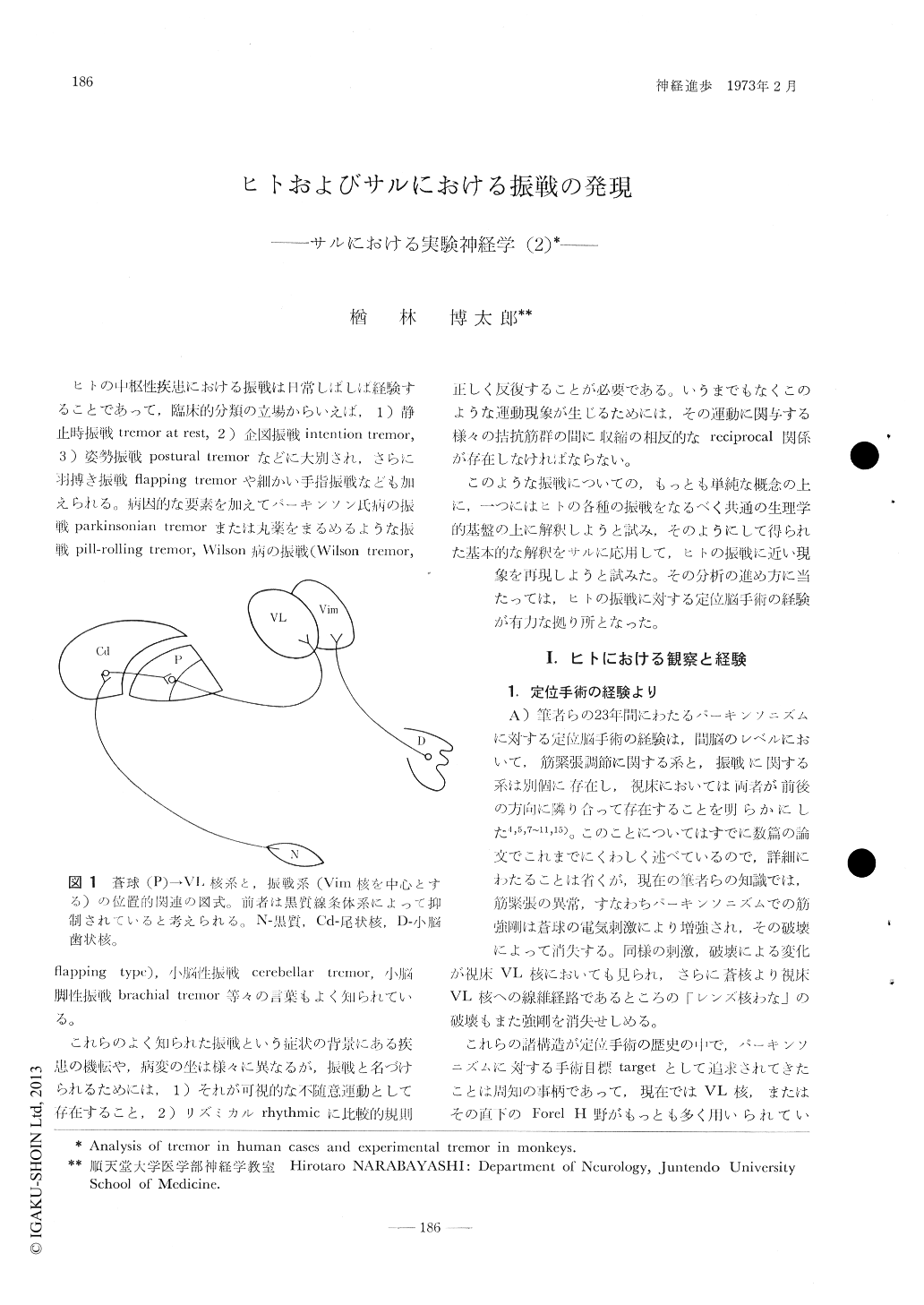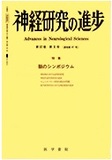Japanese
English
- 有料閲覧
- Abstract 文献概要
- 1ページ目 Look Inside
ヒトの中枢性疾患における振戦は日常しばしば経験することであって,臨床的分類の立場からいえば,1)静止時振戦tremor at rest,2)企図振戦intention tremor,3)姿勢振戦postural tremorなどに大別され,さらに羽搏き振戦flapping tremorや細かい手指振戦なども加えられる。病因的な要素を加えてパーキンソン氏病の振戦parkinsonian tremorまたは丸薬をまるめるような振戦pill-rolling tremor,Wilson病の振戦(Wilson tremor,flapping type),小脳性振戦cerebellar tremor,小脳脚性振戦brachial tremor等々の言葉もよく知られている。
これらのよく知られた振戦という症状の背景にある疾患の機転や,病変の坐は様々に異なるが,振戦と名づけられるためには,1)それが可視的な不随意運動として存在すること,2)リズミカルrhythmicに比較的規則正しく反復することが必要である。いうまでもなくこのような運動現象が生じるためには,その運動に関与する様々の拮抗筋群の間に収縮の相反的なreciprocal関係が存在しなければならない。
In our previous investigation in stereoencephalotomy, it has been established that pallidothalamic tract projecting mainly to VL condulcs muscle rigidity and Vim concerns tremor modulation, which is assumed to receive ample cerebellar afferents. This paper would deal with interrelation of these two symptoms.
1) Frequency of parkinsonian tremor was carefully analysed in the different level of muscle rigidity or of tone in the same one patient. Period of measurement was usually from two to six seconds at the sustained level of certain tone.

Copyright © 1973, Igaku-Shoin Ltd. All rights reserved.


